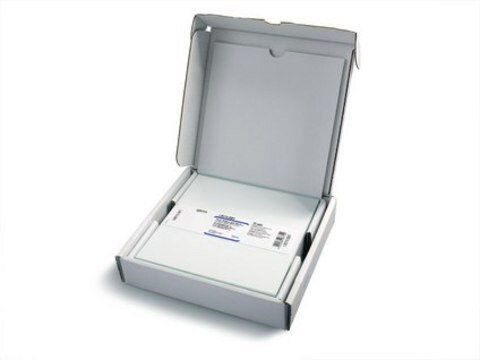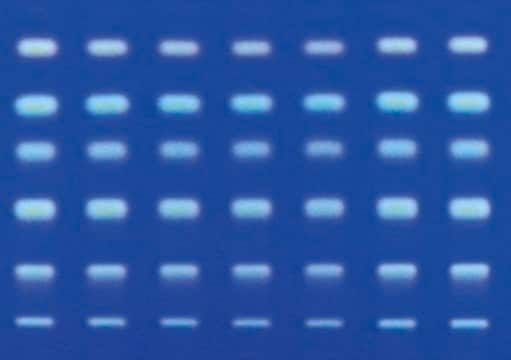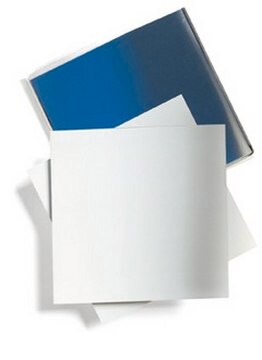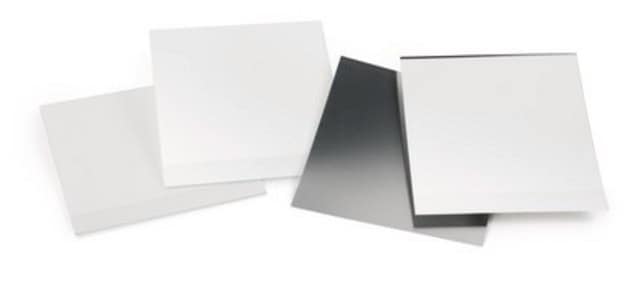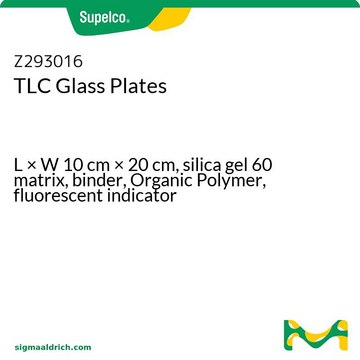1.05626
Plaques TLC, Gel de silice 60
pkg of 50 plates, plate L × W 20 cm × 10 cm, glass support
Synonyme(s) :
Plaques TLC de gel de silice 60
About This Item
Produits recommandés
Matériaux
glass support
silica gel 60 matrix
Niveau de qualité
Caractéristiques
binder Organic Polymer
fluorescent indicator: no
Conditionnement
pkg of 50 plates
Technique(s)
thin layer chromatography (TLC): suitable
Épaisseur de la couche
250 μm
Plaque/Plateau, L × l
20 cm × 10 cm
Taille des particules
10-12 μm
Dimension de pores
60 Å medium pore diameter
Température de stockage
2-30°C
Catégories apparentées
Description générale
Application
- An eco-friendly and cost-effective HPTLC method for quantification of COVID-19 antiviral drug and co-administered medications in spiked human plasma : cette étude de Ghozzy et al. (2024) présente une méthode de chromatographie sur couche mince haute performance (HPTLC) utilisant des plaques TLC en gel de silice 60. La méthode permet de quantifier les médicaments antiviraux et les médicaments co-administrés dans le plasma humain, en mettant en avant son caractère respectueux de l'environnement et rentable (Ghozzy et al., 2024).
- Identification of variety-specific metabolites of basil by high performance thin layer chromatography-assisted metabolic profiling techniques : Wulandari et al. (2023) ont utilisé des plaques TLC en gel de silice 60 en HPTLC pour identifier les métabolites propres à différentes variétés de basilic, soulignant ainsi le potentiel de ces techniques en métabolomique végétale (Wulandari et al., 2023).
- Separation and quantification of azelnidipine and chlorthalidone in a synthetic mixture using optimized HPTLC method : Raimalani et Kotadiya (2024) ont développé une méthode d'HPTLC pour séparer et quantifier l'azelnidipine et la chlorthalidone dans un mélange de synthèse, en utilisant des plaques TLC en gel de silice 60 dans leur procédé d'analyse (Raimalani and Kotadiya, 2024).
- Isolation, development and validation of HPTLC method for the estimation of β-carotene from Gymnosporia senegalensis (Lam.) Loes : Jain et al. (2023) décrivent l'isolement et la validation d'une méthode d'HPTLC pour estimer le β-carotène extrait de Gymnosporia senegalensis, en utilisant des plaques TLC en gel de silice 60, mettant ainsi en avant son application en analyse phytochimique (Jain et al., 2023).
- Simultaneous Determination of Ceftazidime in Three Different Pharmaceutical Preparations Combined with Either Tazobactam, Tobramycin or Sulbactam by HPTLC-Spectrodensitometric Method : Salem et al. (2023) ont employé des plaques TLC en gel de silice 60 dans une méthode spectrodensitométrique d'HPTLC pour la détermination simultanée de la ceftazidime dans diverses préparations pharmaceutiques, démontrant ainsi l'utilité de cette approche en analyse pharmaceutique (Salem et al., 2023).
Liaison
Remarque sur l'analyse
Volume des pores (isotherme N₂) : 0,74 à 0,84 ml/g
d 50 (diffraction laser, distribution de la taille des pores) : 9,7 - 11,7 µm
Épaisseur de couche : 210 - 270 µm
Écart d'épaisseur de couche par plaque : ≤ 35 µm
Test chromatographique :
test de couleur
Valeurs hRf
- bleu vif organol, test de couleur, lipophile :
11 à 25
- Ceres Black G, dosage colorimétrique, lipophile : 34 à 48
- Ceres violet-brun, dosage colorimétrique, lipophile : 52 à 67
Indice de séparation (dosage colorimétrique, lipophile) : ≥ 10,5
Valeur typique déterminée sur une plaque conditionnée
Éluant : toluène (45 % d'humidité relative)
Produit(s) apparenté(s)
Code de la classe de stockage
10-13 - German Storage Class 10 to 13
Certificats d'analyse (COA)
Recherchez un Certificats d'analyse (COA) en saisissant le numéro de lot du produit. Les numéros de lot figurent sur l'étiquette du produit après les mots "Lot" ou "Batch".
Déjà en possession de ce produit ?
Retrouvez la documentation relative aux produits que vous avez récemment achetés dans la Bibliothèque de documents.
Les clients ont également consulté
Notre équipe de scientifiques dispose d'une expérience dans tous les secteurs de la recherche, notamment en sciences de la vie, science des matériaux, synthèse chimique, chromatographie, analyse et dans de nombreux autres domaines..
Contacter notre Service technique